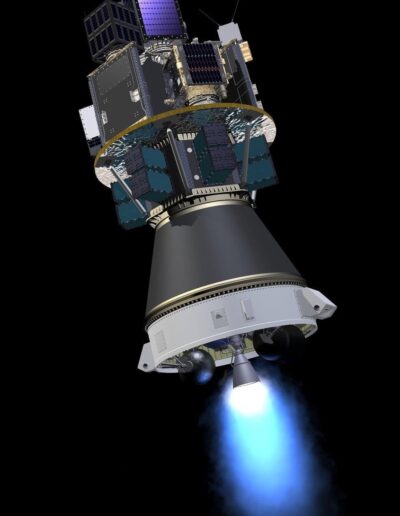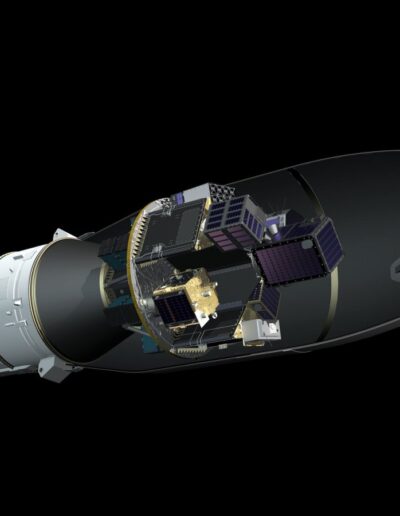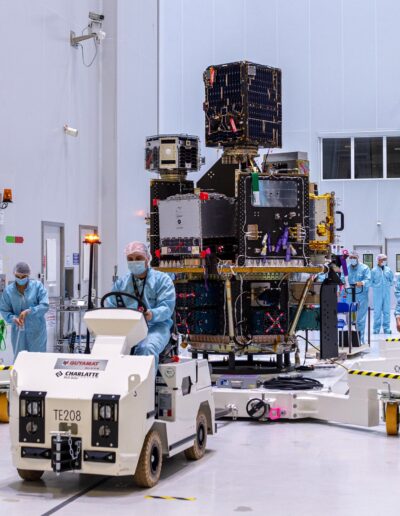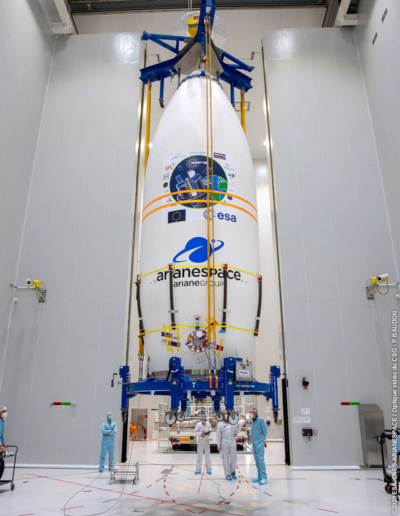Project SSMS
Revolutionizing Small Satellite Launches
Project Significance
The integration of the main cabin and HEXA SSMS into the payload handling office S5 in December 2020 was a major success. This step represents a key innovation in launching small satellites into orbit.
Mission and Capacity
Mission: The integrated system was used in the Vega VV16 and VV23 missions, deploying satellites into a 560 km Sun-synchronous orbit.
Capacity: This mission enabled the launch of multiple satellites, demonstrating the effectiveness of the SSMS distribution framework.
Modular SSMS Dispenser
Plan: SSMS is a special structure designed for mounting on the upper stage of the Vega rocket.
Adaptability: It can carry satellites of various sizes, from 1 kg CubeSats to 400 kg mini-satellites.
Routine Access: Provides an affordable and regular method for launching light satellites.
Democratization of Space: Allows multiple organizations, including research institutions and businesses, access to space.
Overcoming Limitations
Previously, small satellites depended on the availability of large carriers. SSMS removes this barrier by offering efficient shared rides, providing small satellites with greater and more frequent access to space.
“The new service for small Vega spacecraft shifts this model to a shared model, where multiple small satellites fly together, and launch costs are shared,” says Giorgio Tumino, ESA Vega and Space Rider Program Manager.
SSMS Structure and Components
Materials: The structure is lightweight, made from aluminum “sandwich” panels reinforced with carbon fiber coatings.
Main SSMS Components:
- Hexagonal lower section for up to 12 CubeSats or 6 small satellites.
- Upper section for microsatellites and mini-satellites.
Modular Design:
- Central pillar (tower or hexagonal shape)
- Load-bearing platform
- Adjustable beams and separation elements
Test Flight Configuration
FLEXI-3:
- Demonstration configuration weighing only 330 kg
- Aims to prove the technical and financial feasibility of SSMS shared rides
Significance of the Flight:
- Technical Feasibility: Tests the reliability of SSMS for deploying small satellites
- Financial Sustainability: Validates the affordability of the launch model
- Future of Routine Launches: Ensures regular, cost-effective missions
ESAIL Mission
Objective: Enhance maritime traffic monitoring using SAT-AIS microsatellites.
Method: A network of microsatellites for global maritime vessel tracking.
Partners and Collaboration
Key Partners:
- SAB Aerospace (CZ) and Bercella (IT) designed and manufactured SSMS for Avio (ESA Vega’s main contractor).
Collaboration:
- ESA & EU: Project funded through the Horizon 2020 program under the Contribution Agreement between ESA and the EU, signed on April 16, 2019.
SSMS represents a revolutionary step in space transportation, offering a flexible and cost-effective solution for launching small satellites. This innovative system opens new opportunities for scientific and commercial missions worldwide.
Useful links:






